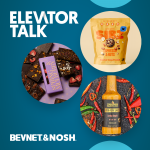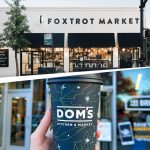NOSH Day 1 Recap: Growing The Tribe
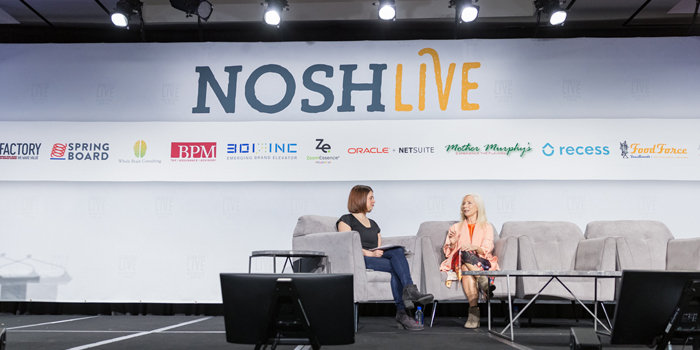
While building a dedicated and loyal audience is essential for any successful CPG food brand, it shouldn’t have to come at the expense of another group. The question of how to bring consumers into new categories and products rather than freezing them out — to grow the tribe, in other words — was posed by NOSH.com editor Carol Ortenberg at the start of the first day of NOSH Live Winter 2018 today. Over the course of the morning’s main stage presentations, experts from across the industry weighed in on how food companies both large and small can tackle this critical challenge.
In the day’s opening presentation, Angie Bastian shared her story of how she went from a psychiatric nurse practitioner to the founder of bagged popcorn maker Boom Chicka Pop. She chronicled the evolution of the brand’s products, including the critical decision she made to expand beyond the company’s initial product, kettle corn, and embrace a new, more expansive brand identity built around positive energy and a sense of celebration.
That bold new direction left some behind — Bastian noted that the brand did lose some consumers in the changeover — but also opened doors with new customers and distributors and ultimately proved to be the right decision. Bastian’s urged food startups to “own and celebrate whatever your product is” because consumers will eventually recognize and value that authenticity. She also encouraged attendees to be active in the food community and “take positivity from any direction.” Those principles helped guide the brand to its eventual $250 million sale to Conagra in 2015.
Next, Brandon Ng and Jay Novak of investment bank Houlihan Lokey — coincidentally, the bank that helped to sell Angie’s — next shared their insights on how to build brands and when to sell them. Novak began the presentation by laying out the current retail environment: in short, “Big Food” knows it needs to change and look towards smaller, slow growth brands that have the potential to scale. “Large companies realize they can accelerate growth in health and wellness brands faster and make them relevant sooner,” he said. As brands that emphasize simple ingredients, nutritional value, convenience and health benefits continue to resonate with consumers, larger companies are looking to those brands to gain relevance with those consumers and acquire new talent for modernizing brand building.
Ng noted the importance of effectively leveraging ecommerce to make audiences feel valued before they actually become consumers. With regards to margin profile, he advised young companies to be disciplined and focused, citing the example of Skinny Pop, and not to compromise long-term goals to achieve near-term growth.
Miguel Garza, co-founder and CEO of Siete Family Foods, took the stage next to discuss how he and his family built a company that brings Mexican culinary traditions to a mainstream American audience. He recalled how a blunt response from a buyer changed his perspective on the brand’s identity and to embrace Siete’s position of “living in the hyphen” as a Mexican-American company. Working under the principle of “family first, family second, business third,” Garza explained that Siete takes a heritage-inspired approach to innovation; “If we can’t solve a problem for the consumer, we don’t think we should be getting into that space,” he said.
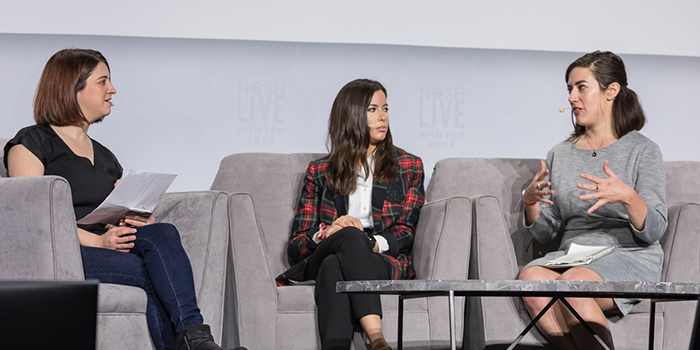
After a networking break, Alex Trott and Katherine Bousson took the stage to discuss how grocery retailer Kroger works with natural and emerging brands. Trott, who is the merchandising client lead for natural foods for Kroger-owned 84.51, explained that the store’s natural product consumers fall into two categories: “Naturally Essential“ and “Naturally Mainstream,” each with different preferences and spending habits. The former, she explained, prizes innovative products, while the latter is looking for better-for-you versions of existing items they already buy. However, Bousson, category manager at Kroger, explained that price is equally critical for both groups.
Trott and Bousson were followed on stage by Kara Roell, co-founder and managing director of VMG Partners, who gave an insider look at how the group evaluates potential investment targets in the food space. Roell emphasized the role of strong, confident and visionary entrepreneurs play in helping brands get over initial hurdles, and how that kind of leadership gives a brand “soul.” Roell also warned of the danger of brands aligning with the corporate venture capital arm of large corporations because it can eliminate optionality. “Regardless of whether it was no-strings-attached or not,” she said. “The perception is you had a chance to buy this brand and you didn’t — so what does this say about that company?”
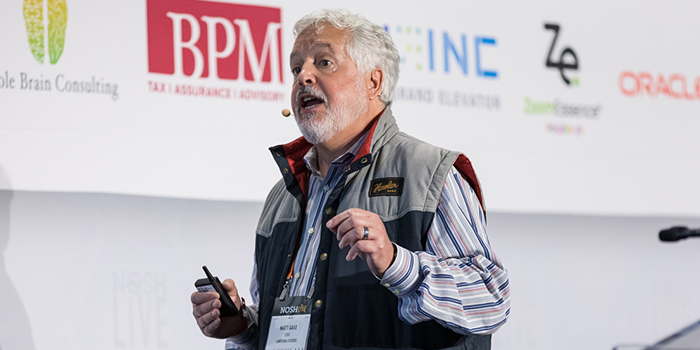
Closing out the morning session, Matt Gase, CEO of hummus maker Lantana Foods, shared lessons from his past success in disrupting the playbook of major corporations. Startups can still compete with big companies, he said, with the right approach. He cited his experiences working for Texas barbecue brand Stubb’s as an example; with a methodical, data-driven strategy, the company was able to expand from its core business of sauces into a variety of different BBQ-themed products that play in different parts of the store. Along with drawing insights from analytics, he repeatedly pointed to the importance of assembling a strong team — including by recruiting talent from big companies — and being open-minded and communicative with others in the industry as hallmarks of success. To beat those bigger companies, he added, targeting the weaker brands in the pack, rather than the market leader, can be good way to build share and attract investment.
Join us tomorrow for more coverage from the second day of NOSH Live Winter 2018.











